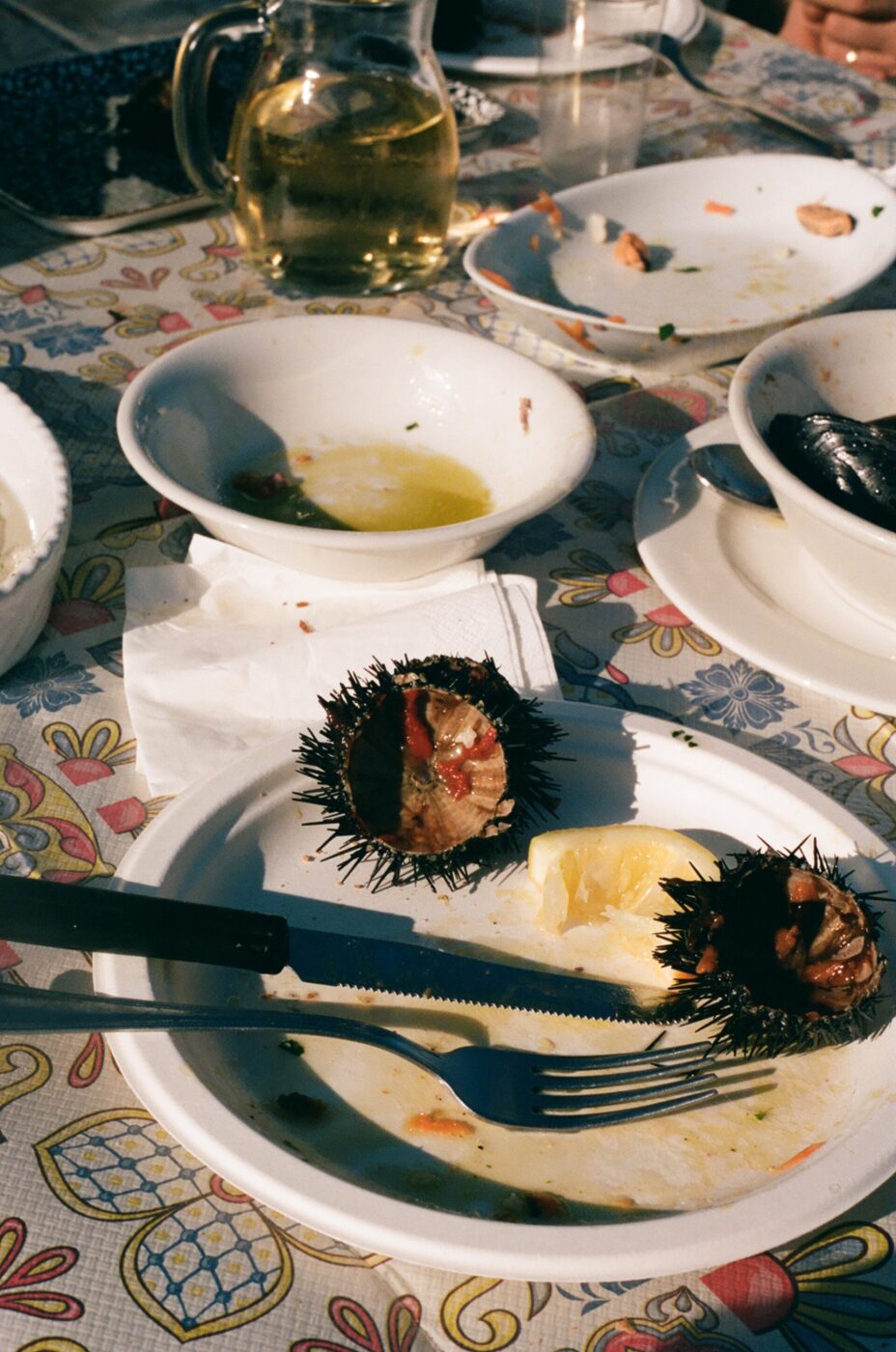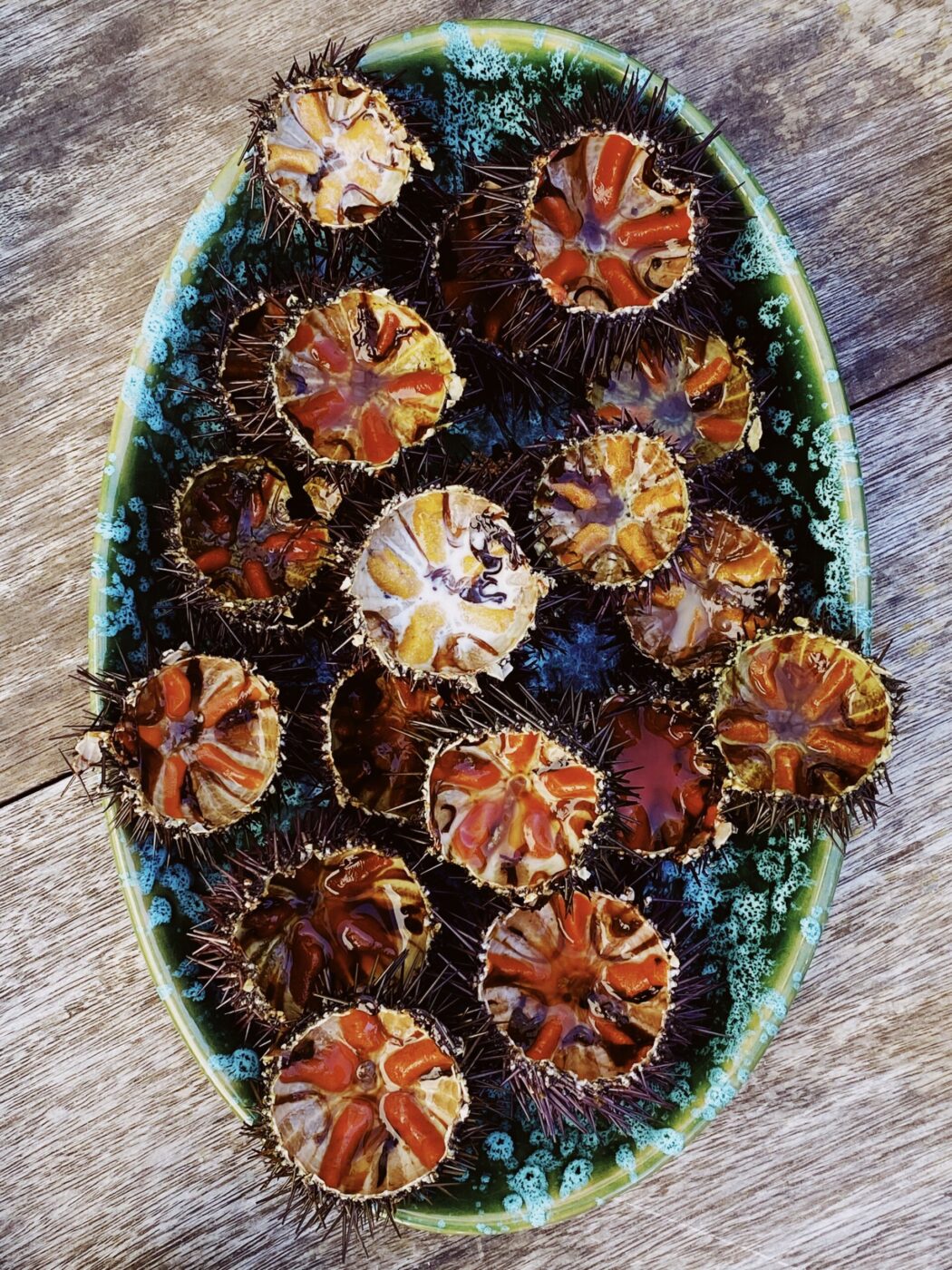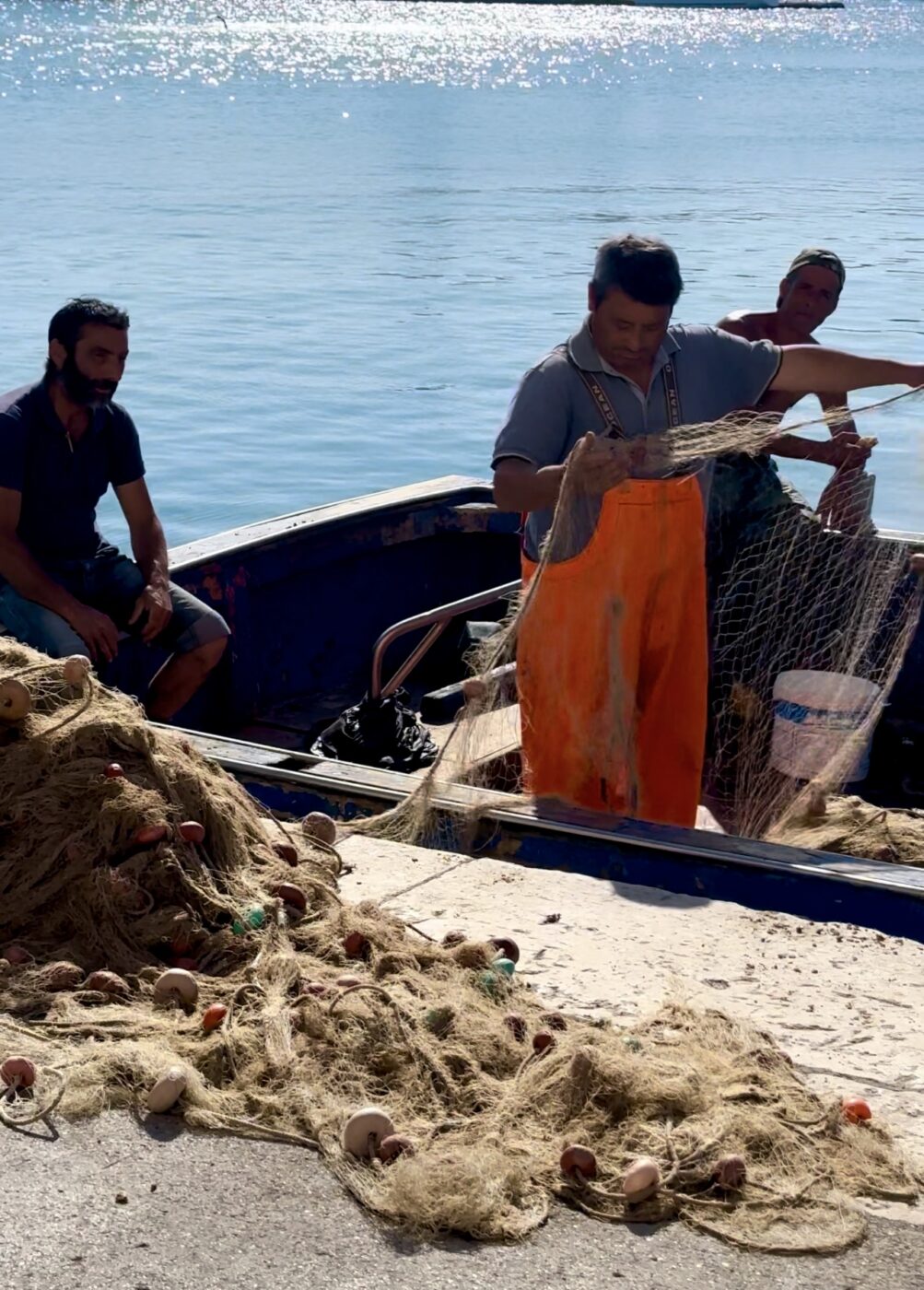The outsider might find Bari’s mercato di pesce (fish market) quite striking. Along the city’s Lungomare, near the historic Teatro Margherita, lies the Molo San Nicola, a pier surrounded by modest-sized, brightly colored fishing boats. There’s nothing pristine or upscale about it—which is precisely the charm—but it’s here that you can find some of the city’s freshest fish. On the dock, sailors and fishermen peddle out the day’s catch—octopus, scallops, oysters, mussels, razor clams, sardines, vongole veraci—on makeshift tables, from plastic buckets, atop Peroni crates. Someone might be tendering freshly caught polpo (octopus) by bashing it right on the pavement or shucking a couple of oysters from a white plastic bucket. Bands of locals will hang around, chat, and knock back a bottle of beer while engaging in a long-held tradition: snacking on crudo, or raw fish, likely caught just hours before eating. It’s a beloved practice that dates back to ancient times, tied to the habits and schedules of the fishermen themselves. In fact, the time to partake in eating crudo is breakfast, or at least a very early lunch, because the sellers will pack up their makeshift stalls by early afternoon. When you head to this dock—known as N’ Dèrr’a La Lanze (“foot of the boat”) in local dialect—you can take your pick of some raw squid with a squeeze of lemon or a few shucked mussels on a simple paper plate to eat right in the open air, with good company and a picturesque view of the sea.
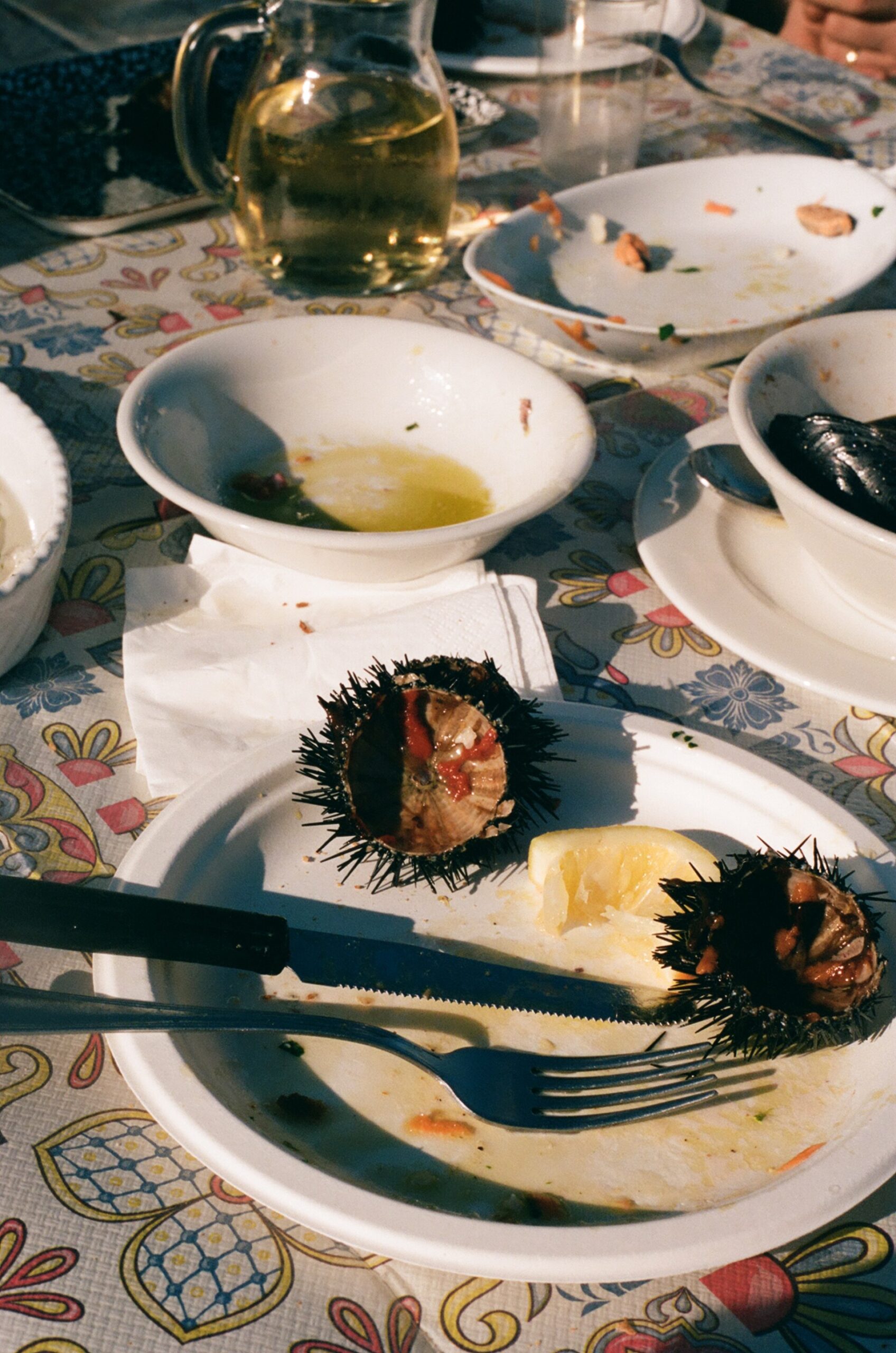
The most prized of these raw delicacies–what many are known to flock here for–is ricci di mare, or sea urchins.
Ricci di mare are quite curious to behold. They’re little spherical creatures, about 2-4 cm in diameter. They range in color from purple to dark black and are covered in extremely sharp spikes. Once held (delicately) in the hand, they feel a bit less intimidating to handle, but they’re no less tricky to shuck. To properly open ricci, you must manage them carefully with scissors or a knife and make an incision closer to the top of the sphere, so that only the very top portion of the shell is cut. It requires some experience and practice, but when you open that outer shell, you get to the treasure: the soft, bright orange roe.
Across Puglia, the roe is primarily eaten raw, straight out of the shell, usually with a bit of fresh bread. It’s unlike any culinary experience you might have, not easily captured in words: buttery, fresh, slightly creamy, and with a hint of the sea. And while ricci di mare is a staple of raw seafood platters, served at dinners and Sunday lunches across the region, it’s not uncommon to find that delicate, custardy roe tossed with some spaghetti for an elegant pasta course.
You may not be able to try this delicacy on a raw seafood platter, nor in an elegant pasta, until after 2026, however, as the harvesting of ricci di mare in Puglia has been at the center of a fraught legal drama in recent years.
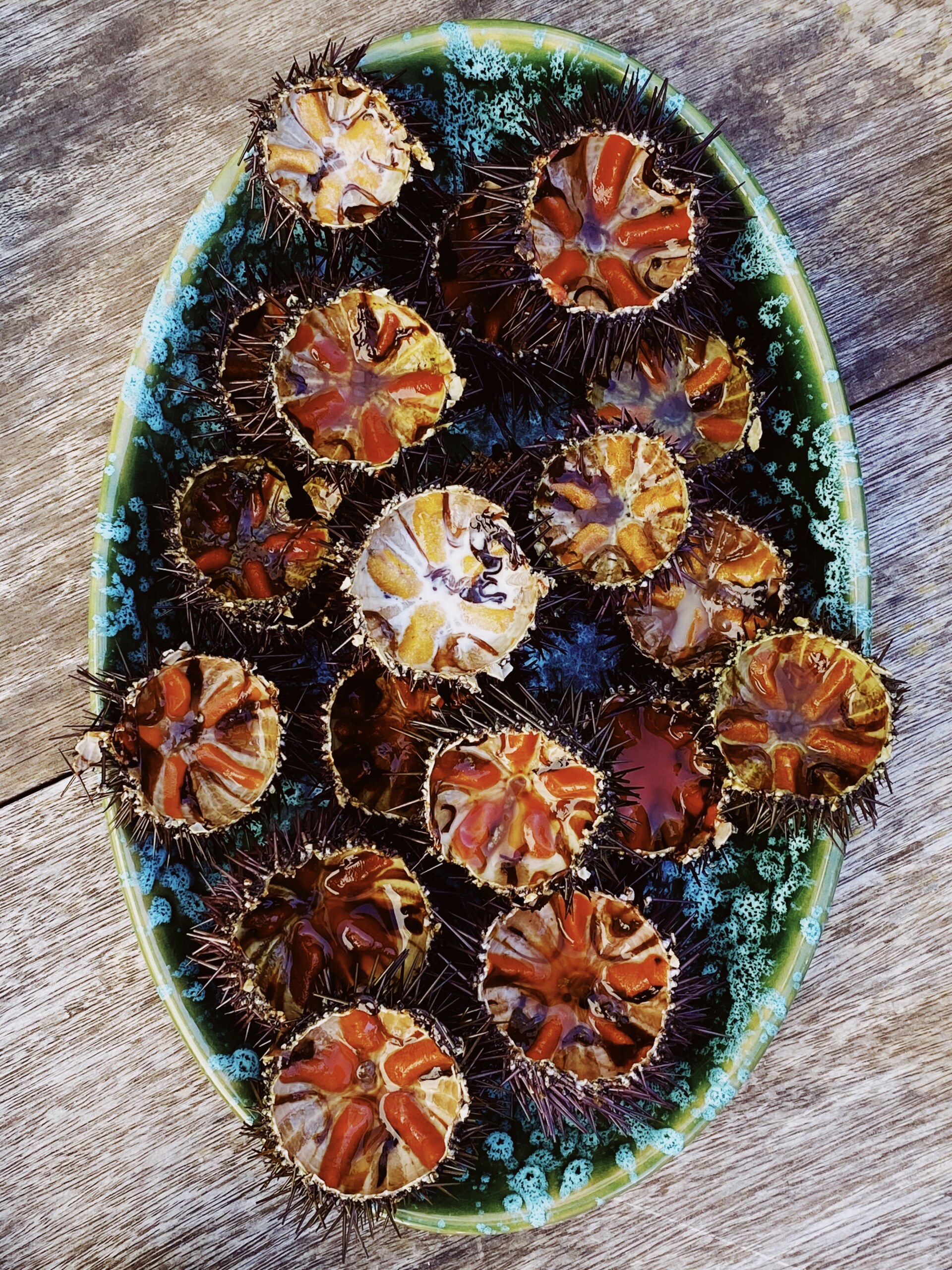
To fully explain this situation, we need to start with a bit of marine science. Sea urchins play a very important role in underwater ecosystems. These echinoderms are herbivores that feed mainly on algae to sustain their populations, and in turn, they serve as feed for different types of predatory fishes. If there are too many or too few sea urchins at any given time, the entire ecosystem could collapse. Given the popularity of ricci di mare in Puglia and other parts of southern Italy, they have been severely overfished in the Adriatic Sea and other local waters, putting them at risk of extinction, which has concerned environmentalists, fishermen, and gastronomes alike. The problem is widespread throughout several regions of the country: in 2022, a former agricultural minister in Sardinia commented that the island’s local sea urchin populations had fallen to nearly zero in certain parts.
Italy already has a few national laws to address the overharvesting of ricci di mare, which were first passed in the mid-1990s. Sea urchin fishing is put on pause–prohibited across the country–during the months of May and June to encourage a rest period for repopulation. But this long-standing regulation has yet to sufficiently address the problem, so, in March 2023, Puglia’s regional government passed a ban on local sea urchin fishing for three years.
While the purpose of the ban was well-intended, its passage has resulted in quite a lot of mess and back and forth. First, because the ban was passed by the region’s regional government, the law’s jurisdiction is ambiguous by nature. As written, the ban extends to the harvesting of sea urchins in Puglian water–the problem is that sea and land are not governed in the same way, so it’s hard to know what would actually demarcate water belonging to the region. In addition, after the law was passed, the regional government failed to put forth a cohesive plan for enforcement or implementation, so it stayed in limbo for some time, with both Port Authorities and fishermen equally confused as to what they should be doing.
After the law went into effect in May 2023, it was immediately challenged by the State Attorney’s Office before the national constitutional court, and it wasn’t until February of 2024 that the court decided to uphold the ban, granting Puglia the right to protect sea urchins from extinction.
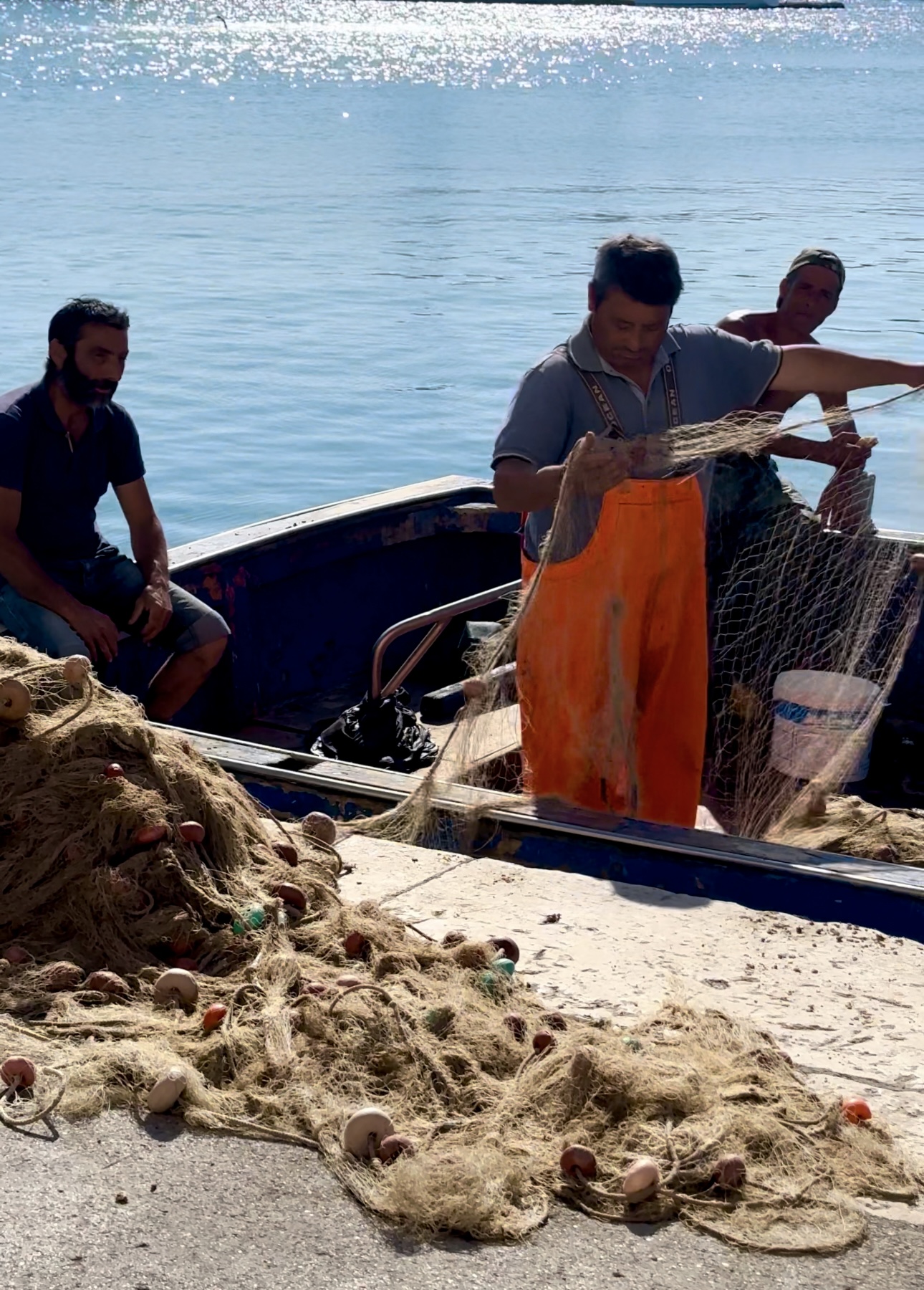
Right now, fishermen face fines of up to 12,000 euros if caught harvesting ricci di mare. There is a question, however, of whether or not the ban will actually solve the problem of repopulating the sea urchin species, as a big source of over-harvesting is illegal or black market fishing, which continues in spite of the new rules. At the end of the day, the people who lose out are the licensed sea urchin fishermen. While they will be compensated for the duration of the ban, it puts a pause on their livelihoods–and on a tradition that they dedicate their lives to sustaining. Not to mention, the new rules are keeping this prized delicacy out of Puglia’s markets and restaurants. It’s a tricky, layered situation, that is–for the most part–the result of goodwill from all parties.
The funny thing is that these kinds of legal battles over fishing, and the sale and consumption of seafood in Puglia, might be as much of a tradition as eating raw ricci di mare in the open air. As far as we understand, Bari’s earliest regulations concerning the practice of selling raw octopus date back to at least the 1500s. So it seems like the Pugliese know how to survive, or perhaps work around, rules over their seafood.
In the meantime, keep this rule of thumb if you head to Puglia at any point before 2026: if you see ricci di mare in a market or restaurant, proceed with caution. It’s probably not from the region. It may be from another part of Italy, like Sicily or Sardinia, but likely from Spain or Croatia. It may also have been caught illegally.

